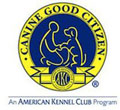If you added a long-haired dog to your family without realizing how much maintenance their coat requires, don’t feel bad – you’re not alone!
The luxurious fur of a long-haired dog adds to their charm, but it also requires regular attention to keep it looking its best. Grooming your long-haired dog is not just about aesthetics; it’s essential for their comfort and well-being.
Brushing: The Foundation of Grooming
Regular brushing is the cornerstone of maintaining a long-haired dog’s coat. This essential step prevents mats and tangles and keeps the fur clean and healthy. The frequency of brushing will depend on your dog’s breed and coat type, but as a general rule, aim for at least a few times a week.
Start by choosing the right brush for your dog’s coat. Slicker brushes, pin brushes, and combs are all good options, but be sure to consult your groomer or veterinarian for specific recommendations. The best brush for your dog will depend on his or her coat type.
When brushing your long-haired dog:
- Begin at the tips and work your way towards the roots to avoid pulling and causing discomfort.
- Pay extra attention to areas that tend to tangle, like behind the ears, under the legs, and around the tail.
- Use a gentle, steady hand to avoid hurting your dog.
Bathing: Keeping the Coat Clean
Bathing is another crucial aspect of long-haired dog grooming. While over-bathing can strip their coat of essential oils, regular baths are necessary to keep their fur clean and prevent odors and skin issues.
Here’s how to bathe your long-haired dog:
- Use a dog-specific shampoo that suits your dog’s coat type and skin sensitivities.
- Thoroughly wet your dog’s coat, making sure to reach the skin.
- Lather the shampoo, starting from the neck and moving towards the tail, being careful to avoid the eyes, ears, and mouth.
- Rinse thoroughly, ensuring there’s no leftover shampoo residue.
- Towel dry your dog and, if needed, use a hairdryer on a low heat setting to finish the drying process.
If your dog has regular appointments with a professional groomer (which we strongly recommend!), they may not require baths between appointments. Even so, it is good to have proper supplies on hand in the event your dog comes home muddy, dirty, or stinky from their latest adventure.
Managing Mats and Tangles
Despite your best efforts, mats and tangles can still occur, especially in areas where your dog’s fur rubs against itself or frequently gets wet. Pay special attention to these areas so you can address mats and tangles before they become unmanageable.
Be gentle when you tease out mats with your fingers or a mat splitter. Pulling on mats can be painful for your dog, just like it is painful when someone pulls your hair. Be patient and err on the side of caution if your dog seems uncomfortable or defensive. Your dog is likely to escalate to growling or snapping if you are ignoring their efforts to communicate and continuing to cause them pain.
If you cannot work through a mat without your dog showing signs of discomfort, it is best to stop and engage a professional groomer to address the problem.
When it comes to maintaining your dog’s long coat, knowledge is power.
Knowing the right tools and techniques will help you maintain your dog’s coat as effectively and efficiently as possible. Brushing doesn’t have to be a dreaded chore!
Speak with your professional groomer about resources to learn how to better care for your dog’s coat; we guarantee you they have recommendations.
You can also attend our free Grooming Your Fluffy Dog at Home Workshop! During this two-hour workshop a professional groomer will teach you the fundamentals of proper at-home grooming to maintain your dog’s coat between grooming appointments.








